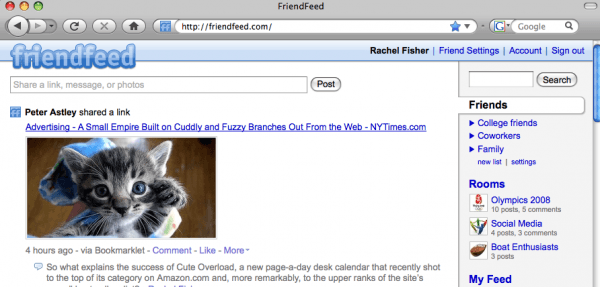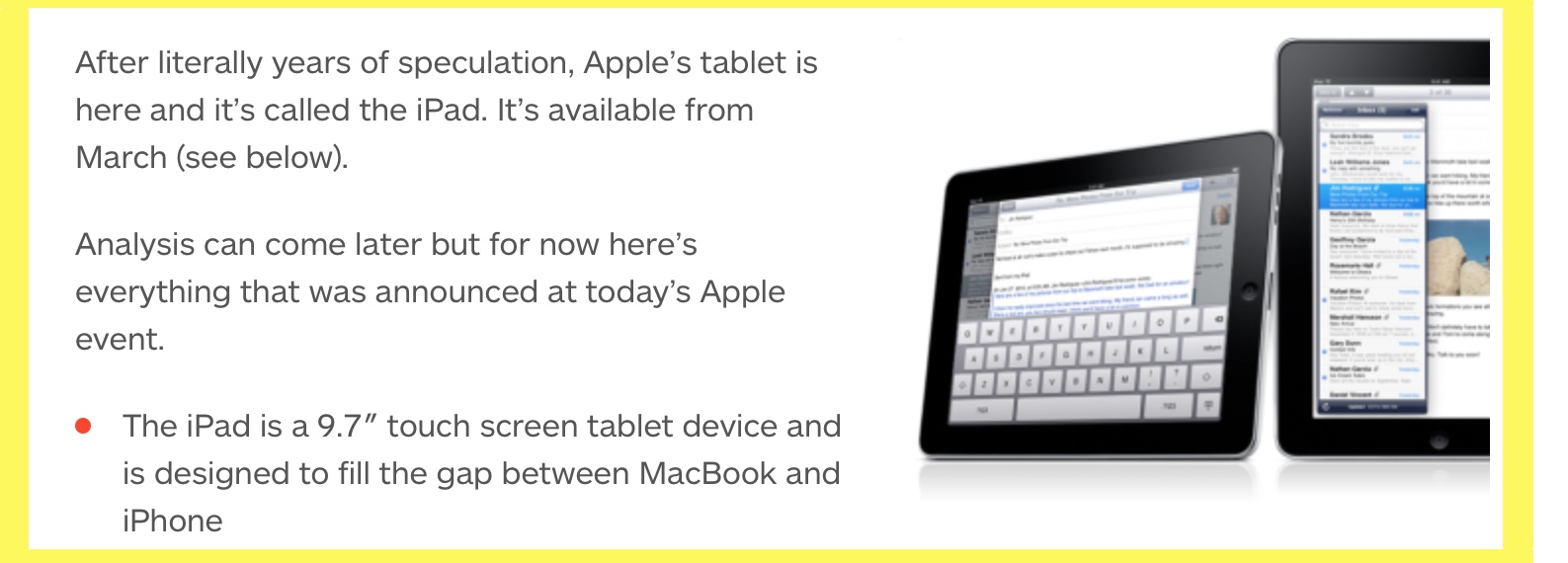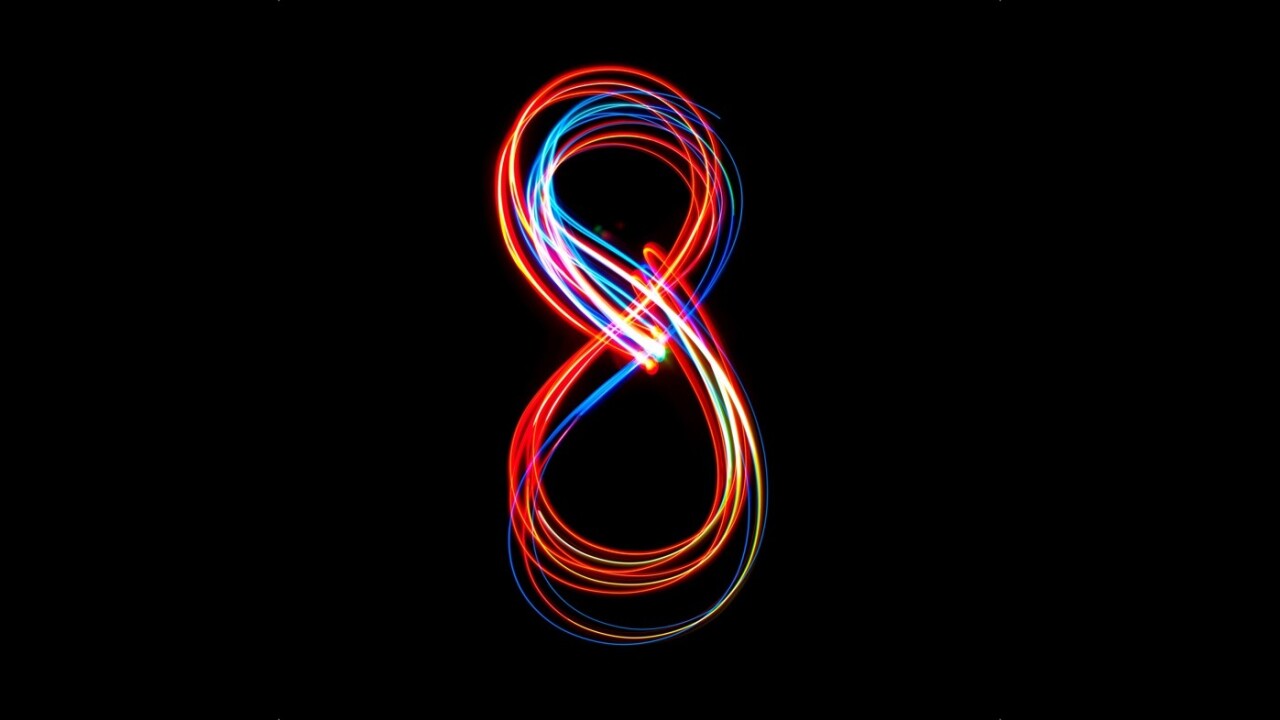Today is my final day writing for The Next Web before I embark on something new. Late May will mark seven years since my first ever article was published. It was about the launch of Google Wave, and thankfully my career here outlived that once hotly-anticipated piece of technology.
I’ve learned a lot in my time here so here are eight lessons I’ll take with me into the future.
1. Tech PR is a mess
When I started writing for The Next Web, I was looking forward to working with PR companies. When I previously wrote a personal blog, I’d get emails about new products days after they launched. It was seductive to imagine being let into a club where you get notified about things days or weeks before they’re announced, and get to be first to write about them.
And it is seductive – knowing your favorite app is getting a cool new feature and having it on your phone before your friends do can be addictive. You have a secret you can’t tell anyone about until that pre-arranged time (often 9am Eastern time on a Tuesday, Wednesday or Thursday) passes – it’s fun.
I still like taking these ’embargoed’ stories when they’re about something I’m interested in, but I have become jaded by the ways of the PR industry:
- The irrelevant mailing lists they add me to that don’t include unsubscribe links.
- The habit of sending out ‘news’ about someone I’ve never heard of being hired by a company our readers don’t care about.
- Giving another publication an exclusive and then emailing me the moment that piece was published to ask me to write about it (gee, way to make our readers feel valued!).
- Repeated attempts to get their clients featured in stories on tangentially related to them and then ‘just circling back’ with more emails when these pitches are ignored because life’s to short to reply to them.
Not all PR people are bad (see below), but the public relations industry has far too many conventions and habits that make life harder than it should for journalists and simply can’t deliver results for its clients.
2. PR people are nicer than journalists pretend they are
For the reasons above and more, journalists love to hate PR people. But contrary to received newsroom wisdom, some PR people are actually helpful and understand that balancing the needs of their clients with the interests of journalists is the best way to get results. I’d even count some tech PR people as (gasp!) friends who I look forward to hearing from and meeting up with.
Occasionally, PR people break out of boring convention and do something so fun it becomes a story in itself.
One day in the summer of 2010, speculation swirled that Twitter was working on some kind of new product called ShoutOut. Rather than send a ‘no comment,’ or some boring, boilerplate explanation, the company’s PR chief at the time sent out what still stands out to me as my favorite PR statement ever.
3. The perfect remote working tool is hard to find
The Next Web has had a geographically distributed team since back before I started here. When I joined, co-founders Boris and Patrick headed up a small office in Amsterdam, while Editor-in-Chief Zee M. Kane worked from London alongside a frequently changing band of part-time contributors around the world.
I was in Manchester, writing during breaks from my dayjob, Alex Wilhelm (now doing great work as Editor-in-Chief at Mattermark) joined soon after from his college dorm in Chicago, and people from all over the world dropped in for stints of anything from a few days to a few months.
Staffing stabilized over time, and a few of us went full-time, but one thing we always struggled with was making sure everyone knew what everyone else was doing. We went through different collaboration tools like fashion models go through new clothes.
FriendFeed worked wonders for us early on. With a network of private rooms delivering realtime feeds about what we and our competition were up to, it was like a prototype for what Slack later became.

After FriendFeed was acquired by Facebook and left to wilt, we tried other options, from Posterous (yes, a blogging platform!) to CC Betty, a little-remembered group email service that required you to ‘cc Betty’ to keep everyone in the team in the loop. That ended up relaunching as Threadbox and getting acquired by Myspace.
We ended up, like other publications, settling on Convo for a few years before more recently shifting to Slack, but I’ll never forget those regular emails from Zee when he announced some crazily contrived new system for team communication that would end up lasting three days before we moved onto something else. It wasn’t his fault – team communication tools have come a long way in the last few years.
4. Readers like roundups ‘in one handy list’
Longtime readers will notice that for a long time we did roundup posts from big events with titles along the lines of ‘Everything Apple announced at WWDC in one handy list.’
To understand why, we have to go back to January 2010 and the unveiling of the iPad by Steve Jobs. TNW was tiny back then and getting invited to an Apple event seemed like an impossible dream. On the day of the event, I recalls that our team consisted of three people. Unfortunately Zee and Alex weren’t available so I flew solo – I had to cover Apple’s biggest launch since the iPhone from my dining room in the North of England.
There being no livestream, I had to go off information from other sources and rather than bust a gut trying to copy the pace of other publications that had several people working together on their own coverage, I kept it all for one post at the end of the event.
At this stage, TNW (a relatively new title on the scene, especially when it came to American audiences) was working hard to be considered equal to our rival tech blogs. I didn’t want it to look like we were really late to the biggest gadget news in tech that year, so I positioned the post as ‘one handy list‘ – a resource to save you from having to read ten different posts on each of our rivals’ sites.

It worked, and it’s something we stuck with, even when we started getting invited to all the big events and did all those granular posts about all the different announcements at an event too. Away from the tech obsessives who want the news the second it’s announced, there are many people who just want all the details in one place, a few hours or days later.
5. Email can become a full-time job if you let it
This is going to sound crazy, but when I started out in tech journalism I got it into my head that a good yardstick by which to measure my success was the amount of email I received. I wanted to be inundated.
I know exactly where I got this idea. In my early days at TNW, MG Siegler (now a venture capitalist) was going through something of a purple patch at TechCrunch, delivering scoops and spot-on ‘hot takes’ almost every day. I enjoyed his writing, and one piece in which he swore off email captured my imagination. I wanted to get to the point where I got so much email that I couldn’t cope. Surely then, that would mean I was massively in demand and, therefore, successful!

Life doesn’t work out like that though. Sure, I got increasing amounts of email – and given the way the tech industry has expanded in recent years I’m willing to bet that I receive more now than MG got back in 2011. The difference for me, though, is that I have a weird passion for dealing with email – I enjoy deleting spam and archiving threads that are finished. I even enjoy responding to people who I’m not going to write about to tell them why. I don’t do that all the time, but sometimes it’s valuable feedback that those people can learn from.
As you can imagine, my compulsion to deal with email results in many hours spent slaving over my inbox when I would arguably be better ignoring it and going to do something more fun and relaxing instead, like have a snooze. At one point a couple of years ago, our CEO Boris even had a word with me about the number of emails I was sending compared to everyone else in the company. After all, the more email you respond to, the more you’re likely to receive.
I’ve come to terms with my problematic relationship with email, but I look back with shame at the day I convinced myself that I actually wanted more email.
6. Take a tablet – but not your phone – onstage with you
One real privilege in the world of tech journalism is that you can occasionally get invited onstage at big conferences to chair panels or conduct fireside chats with industry bigwigs.
If you’re a tech journalist, I encourage you to take up these opportunities when they arise. I’ve found that once you’ve done a few of them, you get invited to do many more and you can pick and choose the ones you really want to take part in.
A couple of tips from bitter experience though:
- You’re probably going to want some notes onstage with you. I tend to read them off an iPad, while some people use a notebook. Just don’t read your notes off your phone – it looks to others (especially in photos) that you’re checking your email onstage rather than listening to what the speakers are saying.
- If you’re wearing socks, make sure they’re plain in color. Bright socks with designs on them stand out a mile and will have the audience’s eyes drawn involuntarily at your feet. I knew this but that didn’t spot me accidentally wearing socks with a polar bear on them to an event in Barcelona this year. When someone’s tweeting about your socks, you know there’s a problem.
@MartinSFP Love the entrepreneur-panel-teddy-bear socks :) #mobilesunday pic.twitter.com/wNtQ5oASN8
— Kat Borlongan (@katborlongan) February 21, 2016
7. Headlines are like music
In the world of online journalism, headlines are like music. They’re little works of art that need to be carefully crafted to make an impact.
Clever headlines that put wordplay over click-ability are like an indie band that hipsters appreciate for their art but never have a hit record. The headlines that people call ‘clickbait’ are more like the pop bangers that are carefully crafted to get to number one in the charts.
Like pop music, types of headline can be popular for a while and then fall out of fashion. Here are a few types of headline I’ve seen have their moment in the sun over the past seven years:
- Mentioning ‘social media’ – when I first started at TNW, we merely had to mention the words ‘social media’ in a headline and traffic would go crazy. By 2012, it was such an overused phrase that the clicks dried up.
- ‘8 ways…’ – list posts with headlines that start with a number are still used a lot (heck , this piece is one!) but they’re not the click goldmine they used to be. BuzzFeed’s success with lists led everyone from po-faced political blogs to your local newspaper to pick up on the trend. Suddenly, like a fleeting dance craze, headlines that start with a number just weren’t a novelty anymore.
- ‘This startup…’ – this one is currently popular because (the thinking goes) if people see a name they don’t know in a headline they’re less likely to click. Facebook, Google or Twitter are fine, but that brand new app without an established name probably won’t appeal to today’s flighty audience.
- ‘Why [X] will happen… and why it won’t’ – this one was popular about four or five years ago as a way of explaining a complicated topic that might evolve in a number of different ways. The problem is that headlines that seem indecisive tend to do badly versus those with a strong, defined opinion or argument.
- ‘And you’ll never believe what happened next’ – this isn’t one we’ve really used at TNW, and isn’t as popular around the Web as some people think it is. Still, its association with the worst evils of clickbait mean that only the trashiest of sites would consider it usable these days.
Like most chart-topping music, the perfect headline is a mix of art (creativity) and science – using data and experience to understand what has worked in the past.
8. The best stories come from exploring
The most fun in this job involves discovering a product or news story yourself. Chancing upon someone at a conference who shows you their app, or getting an off-guard quote from an executive, and then racing away to write about it before anyone else, is one of the best thrills I can have in my professional life.
If headlines are like music, startups are a bit like bands. Discovering a startup and sharing it with the world for the first time makes me feel like John Peel or Zane Lowe enthusiastically telling the world about the new hotness for the first time.

In today’s publishing world of growth at all costs and pressure for individuals to deliver against traffic goals, it can be easy for editors to ignore the value allowing their writers to get out and immerse themselves in the area they cover. Attending conferences, for example, often results in very few news stories, but the people you meet can deliver results months or years down the line.
If tech journalists stay behind their desks, only sourcing stories from their email inbox and the Web, they’re only covering part of their beat. They end up writing about the things that people are either already talking about or the things that PR people want them to discuss.
If you’re a tech editor, make sure you give your writers time to attend events, meet people face-to-face and develop the contacts that pay off later. And if you’re a tech journalist who can’t leave your desk during work hours, stay curious and go out and meet people during evenings and weekends. If you don’t immerse yourself in your beat, how can you ever truly understand the people you’re writing about?
And that’s the biggest lesson I’ve learned in my seven years at The Next Web. For all we obsess over apps and gadgets, we can only really truly understand technology if we understand the people behind it.
Get the TNW newsletter
Get the most important tech news in your inbox each week.





